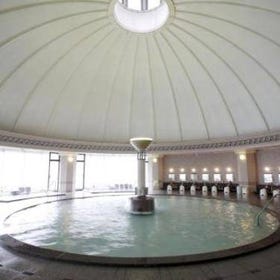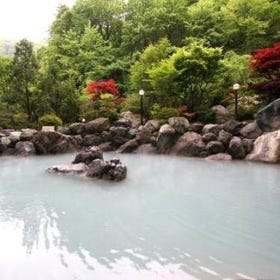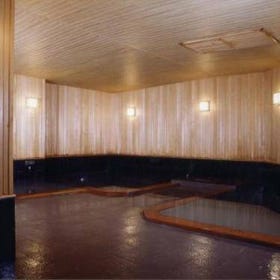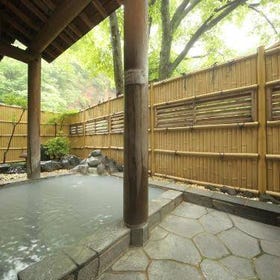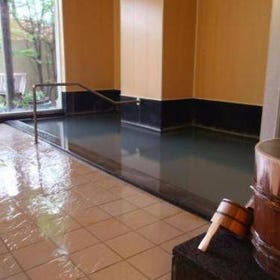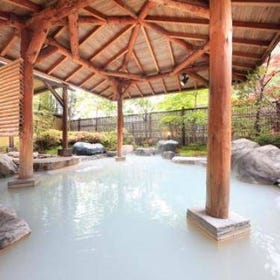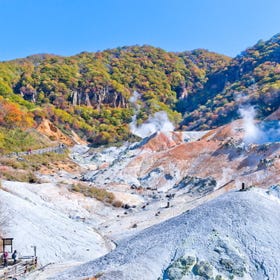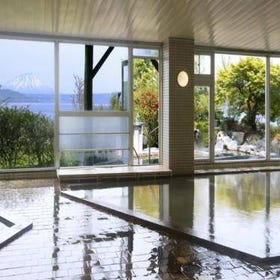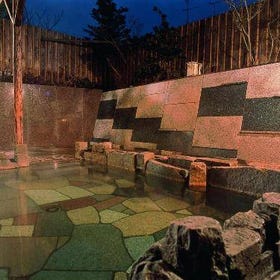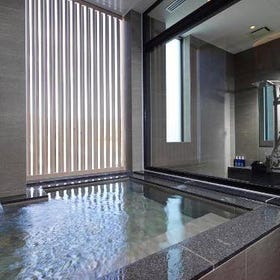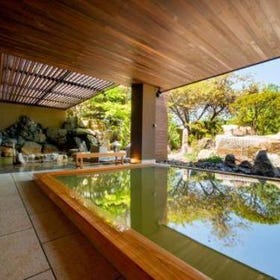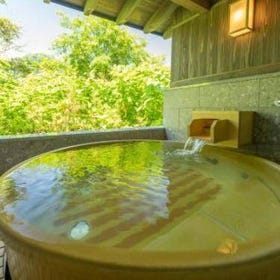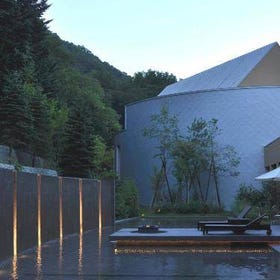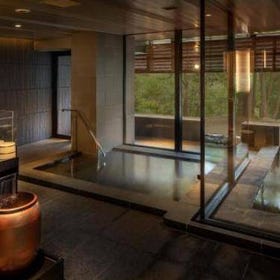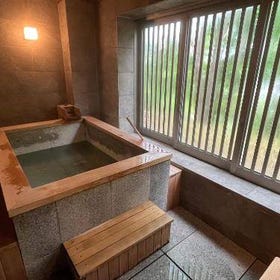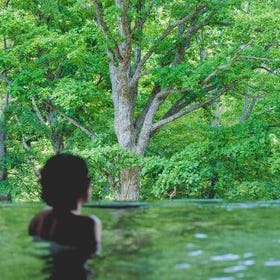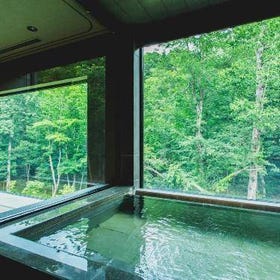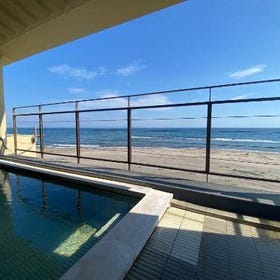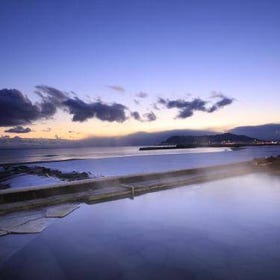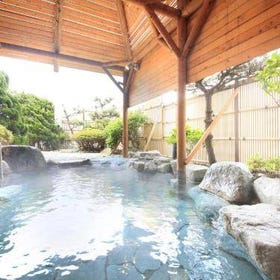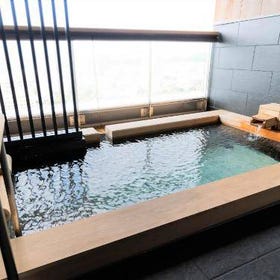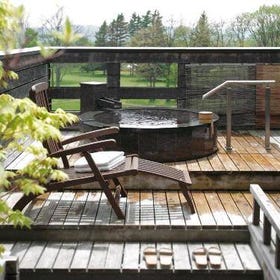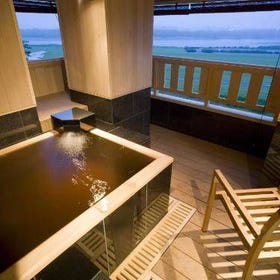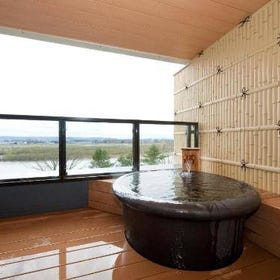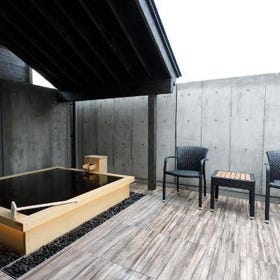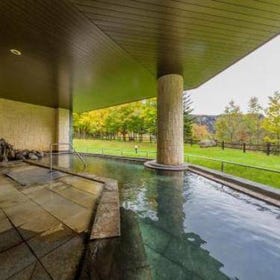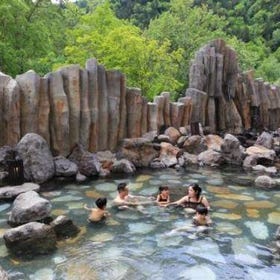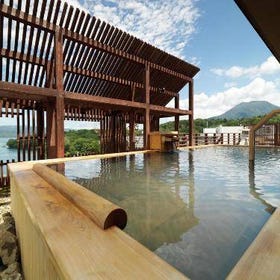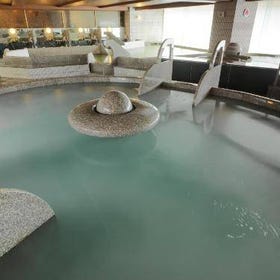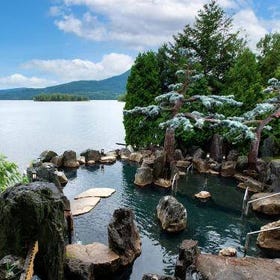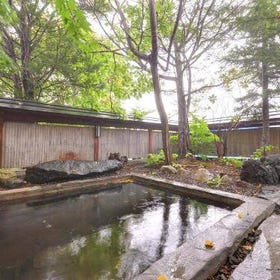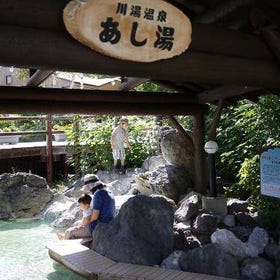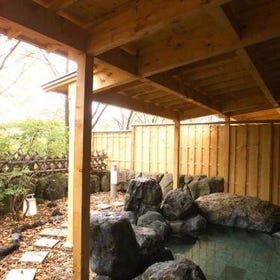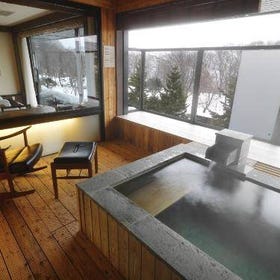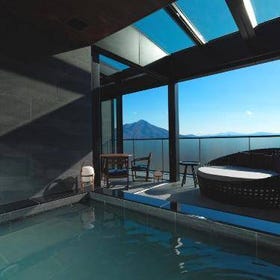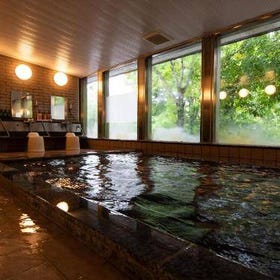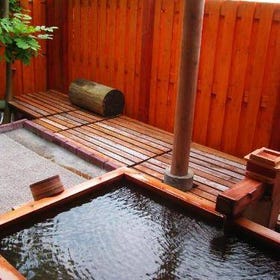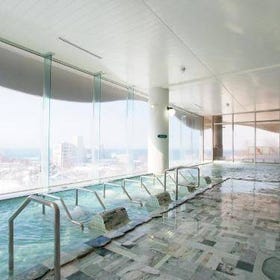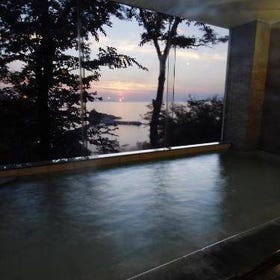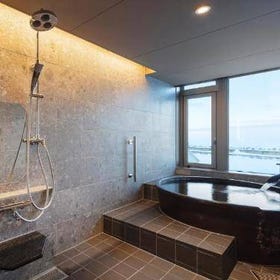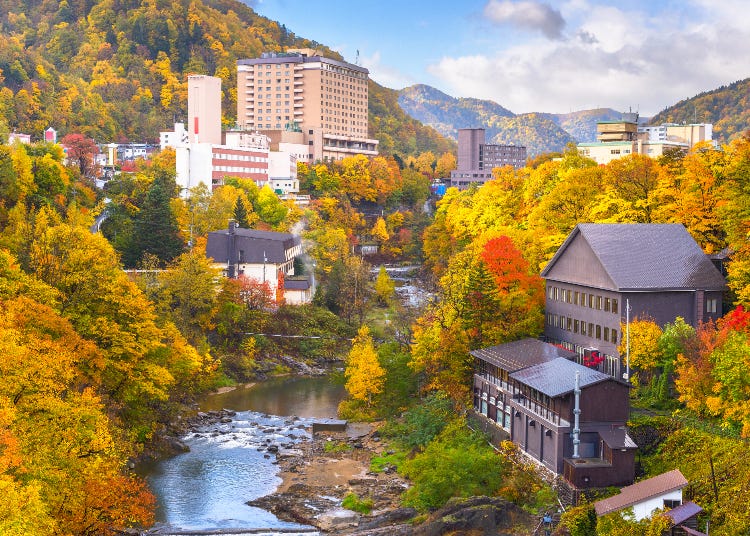
In Japan's wild northern island of Hokkaido, onsen hot springs can be found in a variety of tranquil places. With so many volcanically active areas, such as Asahi-dake, the Shiretoko Mountain Range, Mount Meakan, Mount Io (Atosanupuri) and Mount Usu, the island is bubbling with activity.
Many of these Hokkaido onsen hot springs can be found in breathtaking areas. Some can be found beside scenic coastlines, while others are nestled within evergreen-speckled valleys. What's more, there is a massive variety of hot spring water types - including some with organic plant matter. One could call Hokkaido a hot spring paradise.
So what are some of the best Hokkaido onsen to visit? Here we'll introduce Hokkaido’s popular hot spring areas you'll want to add to your bucket list!
(Main image: PIXTA)
- Table of Contents
-
- 1. Noboribetsu Onsen: Offering Various Kinds of Hokkaido Onsen Waters
- 2. Toyako Onsen: Abundant Quantity of Hot Spring Water and Beautiful View
- 3. Jozankei Onsen: Convenient Access from Sapporo Station
- 4. Yunokawa Onsen: Located along the Ocean near Hakodate Airport
- 5. Tokachigawa Onsen: A Rare Plant Moor Hot Spring!
- 6. Sounkyo Onsen: Located at the Base of Daisetsuzan
- 7. Akanko Onsen: Located Beside Lake Akan, where Marimo Grow
- 8. Kawayu Onsen: Sulfur Spring Flowing from Mount Io
- 9. Shikotsuko Onsen: Hot spring immersed in nature, near New Chitose Airport
- 10. Utoro Onsen: Hot-spring paradise where you can enjoy the nature of Shiretoko
1. Noboribetsu Onsen: Offering Various Kinds of Hokkaido Onsen Waters
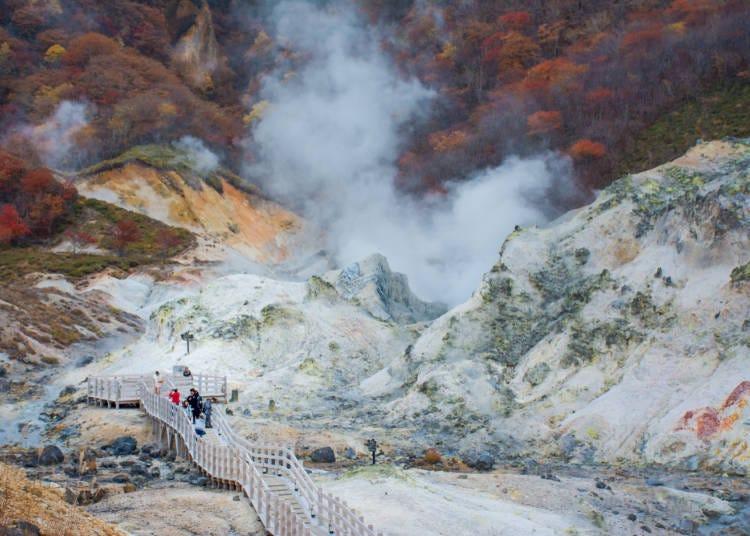
Noboribetsu Onsen, a famed hot spring location in Hokkaido, draws its waters from Jigokudani, often referred to as Hell Valley. Rising steam can be observed from this valley, with a daily outpour of 10,000 tons of water nourishing the neighboring hotels.
The area is proud of its nine different varieties of hot spring water, each offering a distinct sensation at separate locations.
Moreover, Jigokudani is more than just a water source; it's a top tourist spot in Noboribetsu. Tourists can wander and discover the valley through a special pathway. Scattered across this Hokkaido hot spring district are numerous Oni (demon) statues, symbolizing the essence of Noboribetsu.
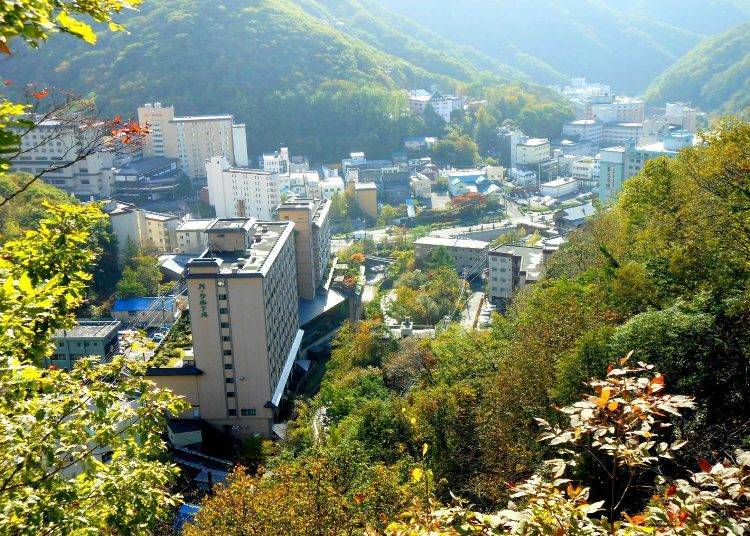
- Access:
- Around 1 hour and 50 minutes by Kosoku Onsen-Go bus from JR Sapporo Station, one bus per day.
- Feature:
- 9 different water qualities; each hot spring has a high temperature ranging from 45~90℃. You can enjoy various water quality hot springs and outdoor hot springs at hotels.
- Scale of the Hot Spring Area:
- 14 hotels. Along Noboribetsu Onsen Dori, there are many restaurants and gift shops.
- Hot Spring Quality and Effect:
- -Sulfur Spring: Chronic dermatopathia and others
-Common Salt Spring: Chronic dermatopathia and others
-Vitriol Spring: Anemia and others
-Radium Spring: Neuralgia and others
- Main Hotels:
- Dai-ichi Takimotokan Hotel, Noboribetsu Grand Hotel, and Hotel Mahoroba
2. Toyako Onsen: Abundant Quantity of Hot Spring Water and Beautiful View
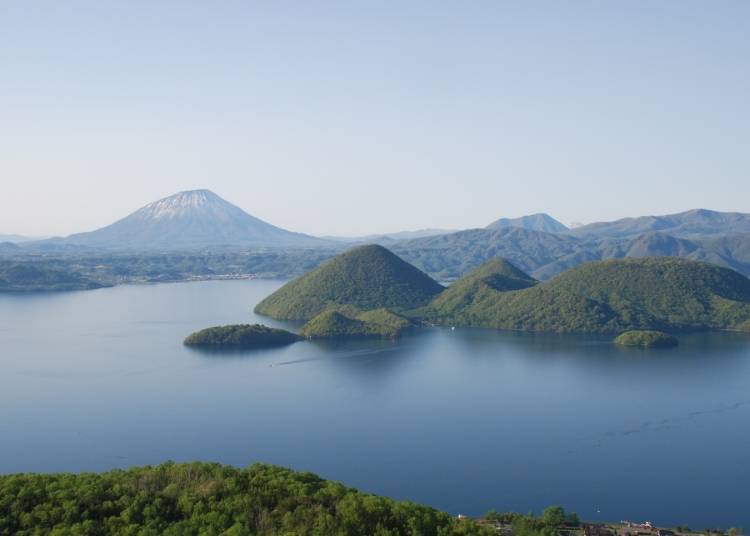
Toyako Onsen sits by Lake Toya, a scenic lake sculpted by age-old volcanic activities and adorned with an island in its midst. This breathtaking view has earned recognition from the Global Geoparks Network.
More than 10 hotels line the lakeside, and a good number of them welcome day visitors to enjoy their hot springs. Guests can also relish in the authentic Hokkaido onsen feeling with free hand and foot baths available. Between the end of April and October, the lake's charm intensifies with nightly fireworks displays.
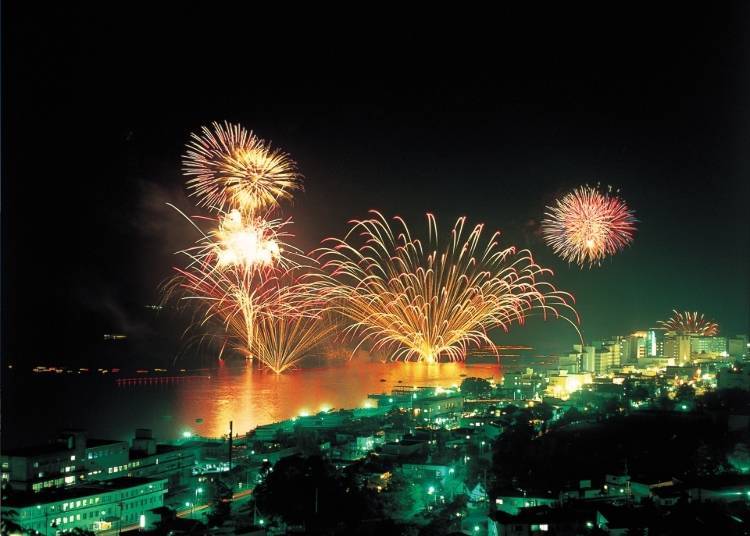
- Access:
- Around 2 hours and 45 minutes by bus from JR Sapporo Station
- Feature:
- Splendid view of Lake Toya while enjoying the famous Hokkaido onsen there; plenty of hot spring water with 1400 liters per minute.
- Scale of the Hot Spring Area:
- 14 hotels and inns, there are also guest-houses and boarding houses. Various restaurants and gift shops in the hot spring district.
- Hot Spring Quality:
- Natrium, calcium – chloride spring
- Helps With:
- Cuts, poor blood circulation, and others
-
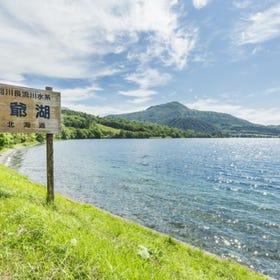
-
Address
Touyakoonsen, Touyako-cho, Abuta-gun, Hokkaido, 049-5721
View Map -
Nearest Station
Toya Station (Muroran Main Line)
20 minutes by bus
- Phone Number 0142-75-2446
-
Address
Touyakoonsen, Touyako-cho, Abuta-gun, Hokkaido, 049-5721
3. Jozankei Onsen: Convenient Access from Sapporo Station
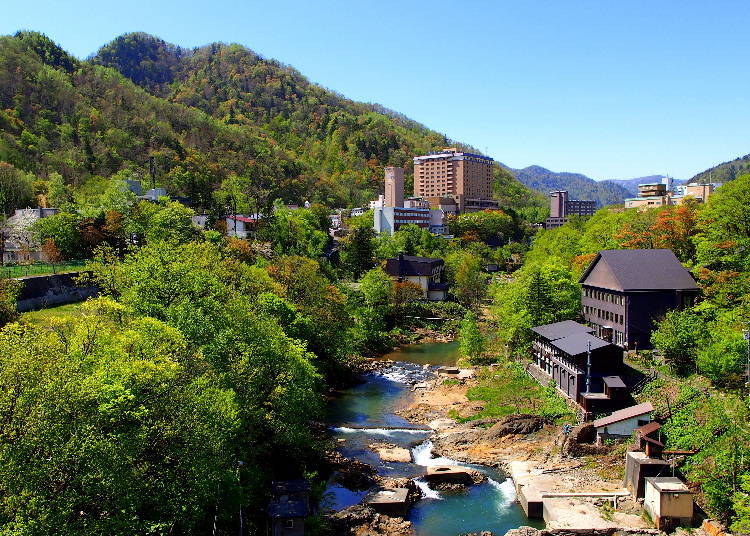
Jozankei, a celebrated hot spring region in Hokkaido, lies approximately 26km south of central Sapporo, a drive of about an hour. Founded in 1886, the discovery of this ancient onsen is credited to the Buddhist monk Miizumi Jozan, who learned of its existence from the native Ainu people. Set amidst a lush valley, Jozankei becomes a particularly popular spot in autumn, famed for its brilliant fall foliage.
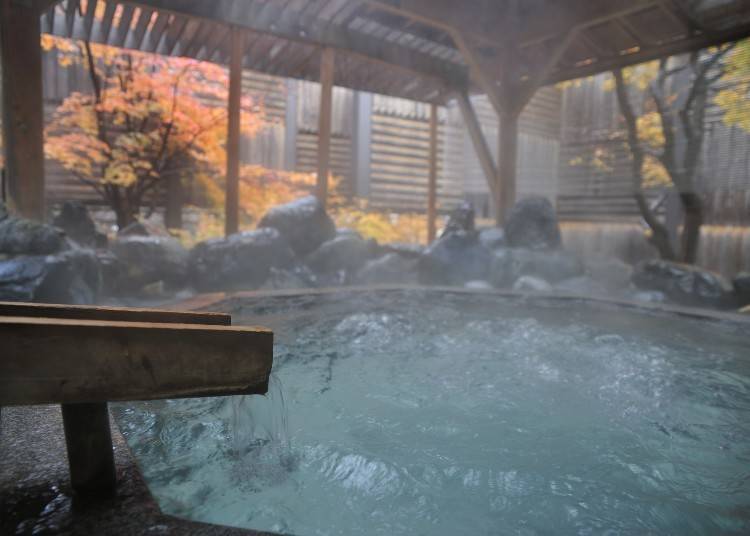
- Access:
- About a 1-hour bus ride from JR Sapporo Station
- Feature:
- Colorless and transparent water with a temperature between 50-80℃
- Scale of the Hot Spring Area:
- Around 18 large hotels and long-standing inns. The hot spring district has Gensen Park, hand and foot baths, and walking paths.
- Hot Spring Quality:
- Natrium - chloride spring
- Helps With:
- Anemia, neuralgia, and others
-
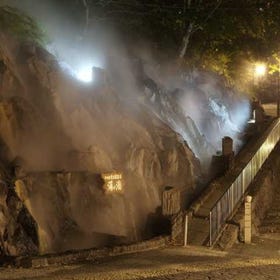
-
Address
Sadayamakei Onsen, Minami-ku, Sapporo, Hokkaido, 061-2302
View Map -
Nearest Station
Sapporo Station (Hakodate Main Line)
65 minutes by bus
- Phone Number 011-598-2012
-
Address
Sadayamakei Onsen, Minami-ku, Sapporo, Hokkaido, 061-2302
4. Yunokawa Onsen: Located along the Ocean near Hakodate Airport
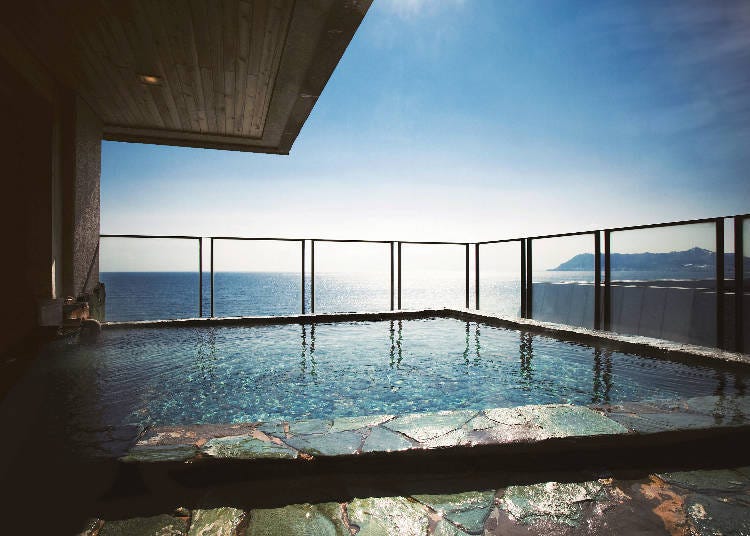
Yunokawa Onsen is conveniently located for travelers, being just a 5-minute drive from Hakodate Airport and about 15 minutes by car from Hakodate City. Tracing its roots back to 1653 when the hot spring was first discovered, the initial spa establishment emerged in 1886, laying the groundwork for future growth in the vicinity.
Positioned with views of the Tsugaru Strait, several lodgings provide open-air hot springs that offer captivating vistas of the ocean. Notably, the region is famed for its tropical botanical garden, where monkeys can be observed basking in the warm waters during the colder seasons.
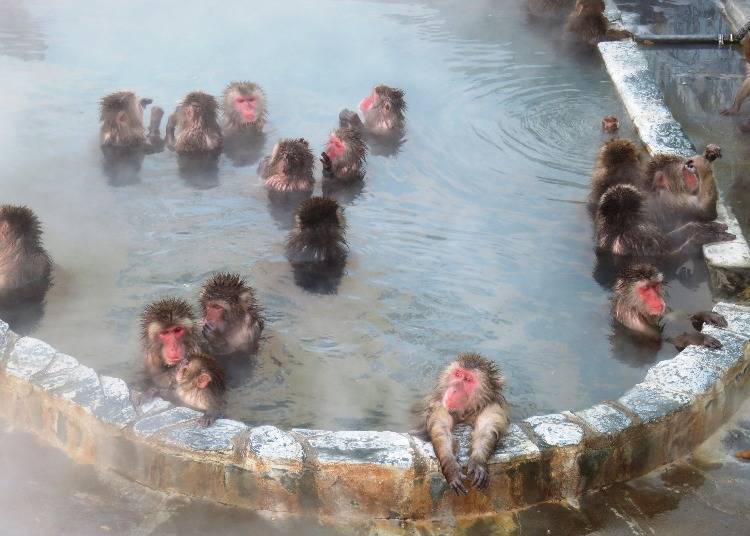
- Access:
- About a 6-hour bus ride from JR Sapporo Station
- Scale of the Hot Spring Area:
- There are about 19 hotels and Japanese-style restaurants and inns. There is no central hot spring district with inns, restaurants, or gift shops.
- Feature:
- Every minute, 4,850 liters of water springs out from the 22 sources. The average temperature is 65℃.
- Hot Spring Quality:
- Natrium - calcium chloride spring
- Helps With:
- Stiff shoulders, bruises, sprains, and others
-
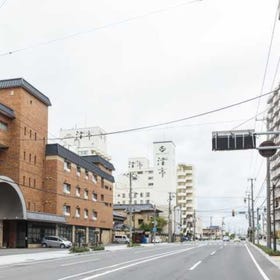
-
Address
Yunokawacho, Hakodate-shi, Hokkaido, 042-0932
View Map -
Nearest Station
Hakodate Station (Hakodate Main Line)
- Phone Number 0138-57-8988
-
Address
Yunokawacho, Hakodate-shi, Hokkaido, 042-0932
5. Tokachigawa Onsen: A Rare Plant Moor Hot Spring!
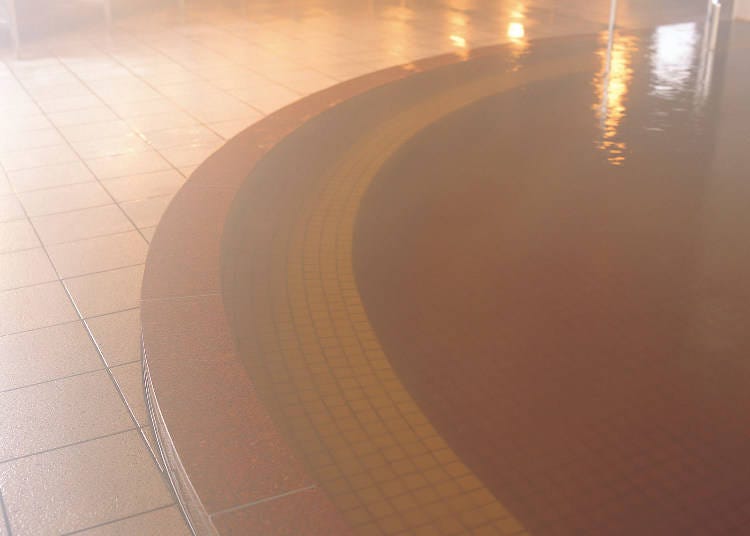
Located alongside the Tokachigawa (Tokachi River), the hot spring originates from depths of 500 to 700 meters underground, with the water temperatures fluctuating between 55 to 60℃. This onsen is distinguished by its one-of-a-kind plant moor water composition.
Unlike typical mineral hot springs, moor springs possess an alkaline nature and incorporate humic elements derived from peat, which imparts a soft texture to the water. These springs are highly valued for their properties that render the skin feeling exceptionally soft and smooth.
- Access:
- About 30 minutes by car from JR Obihiro Station
- Scale of the Hot Spring Area:
- 9 hotels are located along the Tokachigawa riverbank, the inn with moor hot spring is in that area. However, there is no hot spring district with inns and restaurants.
- Feature:
- Alkaline with a reddish-brown color.
- Hot Spring Quality:
- Weak alkaline hypotonicity hot spring
- Helps With:
- Neuralgia, arthralgia, chronic dermatitis, and others
-
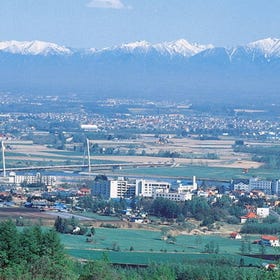
-
Address
Tokachigawaonsenminami, Otofuke-cho, Kato-gun, Hokkaido, 080-0263
View Map -
Nearest Station
Obihiro Station (Nemuro Main Line)
25 minutes by bus
- Phone Number 0155-32-6633
-
Address
Tokachigawaonsenminami, Otofuke-cho, Kato-gun, Hokkaido, 080-0263
6. Sounkyo Onsen: Located at the Base of Daisetsuzan

Situated at a height of 670m, Sounkyo Onsen is a mountain resort spa area tucked away at the base of Mount Kuro, a member of the Daisetsuzan Volcanic Group. A ropeway and lift from the onsen area facilitate a straightforward journey to Mount Kuro's 7th station. Renowned for its picturesque valley panoramas, Sounkyo is a premier onsen destination in Hokkaido.
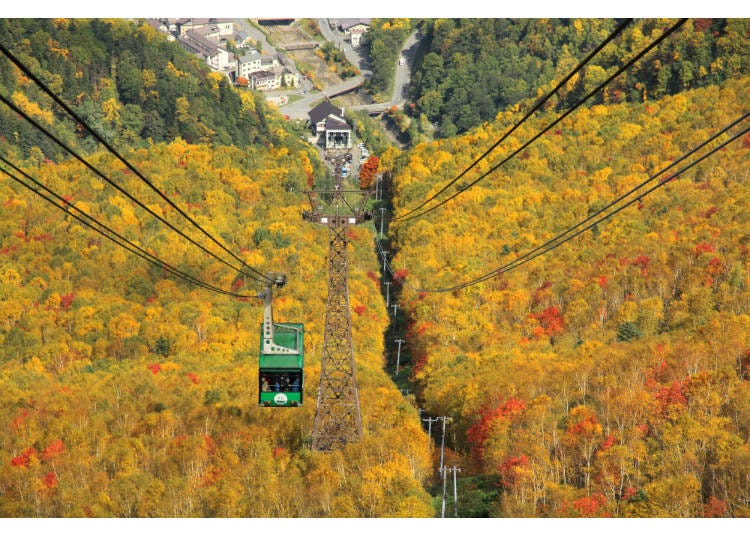
- Access:
- An hour and a half drive by car from JR Asahikawa Station
- Scale of the Hot Spring Area:
- 17 hotels in the area
- Feature:
- Located at the base of Mount Kuro of the Daisetsuzan Volcanic Group, each hotel has its own hot spring source.
- Hot Spring Quality:
- Mainly simple thermal hot spring
- Helps With:
- Neuralgia, poor circulation, arthralgia, and others
-
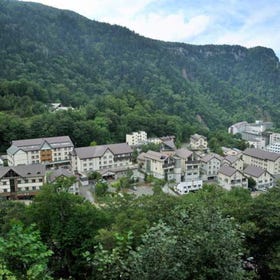
-
Address
Sounkyo, Kamikawa-cho, Kamikawa-gun, Hokkaido, 078-1701
View Map -
Nearest Station
Kamikawa Station (Sekihoku Main Line)
30 minutes by bus
- Phone Number 01658-2-4058
-
Address
Sounkyo, Kamikawa-cho, Kamikawa-gun, Hokkaido, 078-1701
7. Akanko Onsen: Located Beside Lake Akan, where Marimo Grow
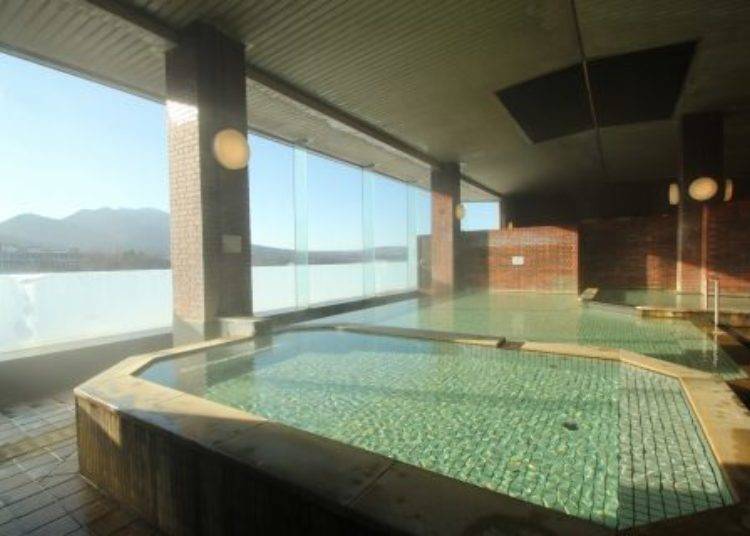
Positioned beside Lake Akan, the acclaimed Akanko Onsen is recognized for the natural marvel of marimo (moss balls). Various locations around the lake exhibit the planet's vibrant energy, with segments discharging mud infused with volcanic gases.
A majestic hotel with panoramic views stands sentinel over the lake, granting guests mesmerizing vistas of Lake Akan, Mount Oakan, and Mount Meakan from its alfresco hot spring. Close to the onsen region, a native Ainu settlement opens its doors to travelers, providing insights into the profound Ainu heritage.
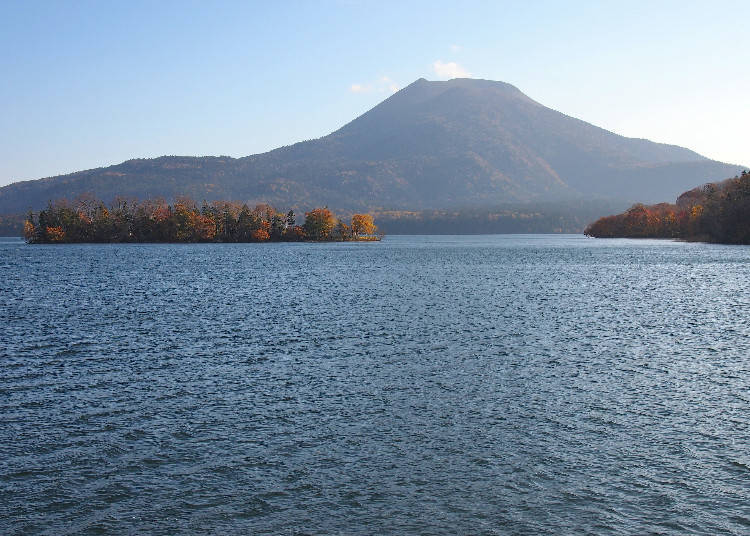
- Access:
- About an hour and a half by car from JR Kushiro Station. An hour and 15 minutes by the airport shuttle bus from Tancho Kushiro Airport
- Scale of the Hot Spring Area:
- There is a large hotel on the lakeside, restaurants, Ainu gift shops, and foot and hand baths. At the Ainu Kotan, there are gift shops operated by Ainu people and also a theater to enjoy the traditional dance.
- Features:
- Major sightseeing area of eastern Hokkaido, located at the lakeside of Lake Akan, and tourist attractions like marimo and Ainu Kotan
- Hot Spring Quality:
- Mainly simple thermal hot spring
- Helps With:
- Neuralgia, poor circulation, and others
- Main Hotels:
- Akan Yuku no Sato Tsuruga, New Akan Hotel, Hotel Akankoso
-
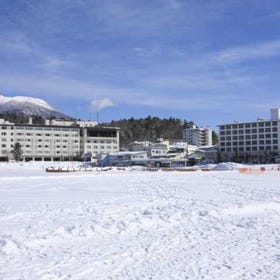
-
Address
Akancho, Kushiro-shi, Hokkaido, 085-0467
View Map -
Nearest Station
Kushiro Station (Nemuro Main Line / Hanasaki Line)
- Phone Number 0154-67-2254
-
Address
Akancho, Kushiro-shi, Hokkaido, 085-0467
8. Kawayu Onsen: Sulfur Spring Flowing from Mount Io
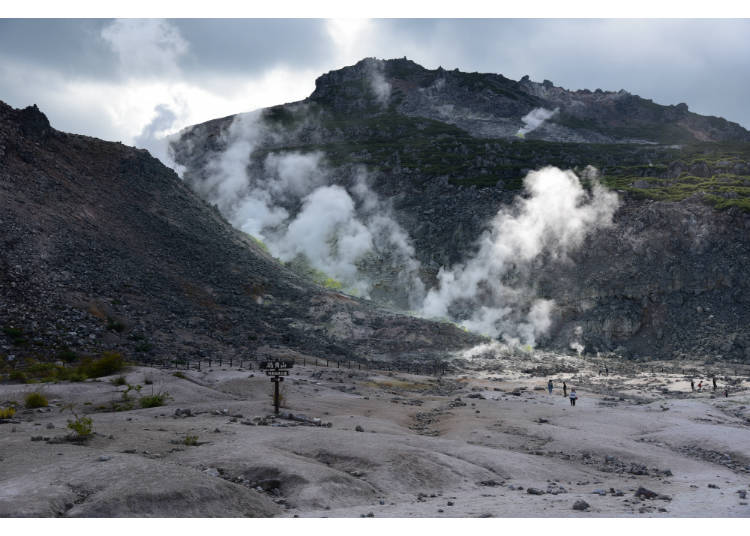
Kawayu Onsen is a distinguished hot spring district with its lodgings thoughtfully situated along a river that draws its enriched waters from Mount Io (Atosanupuri). Just 3km away, Mount Io, once a notable sulfur mine, continues its fumarolic activities, infusing the area with a characteristic sulfuric scent amidst its stark backdrop. In the vicinity of Kawayu Onsen, visitors can also indulge in a generously sized foot bath. A testament to its purity, the district takes pride in its waters, with 100% sourced directly from the spring.
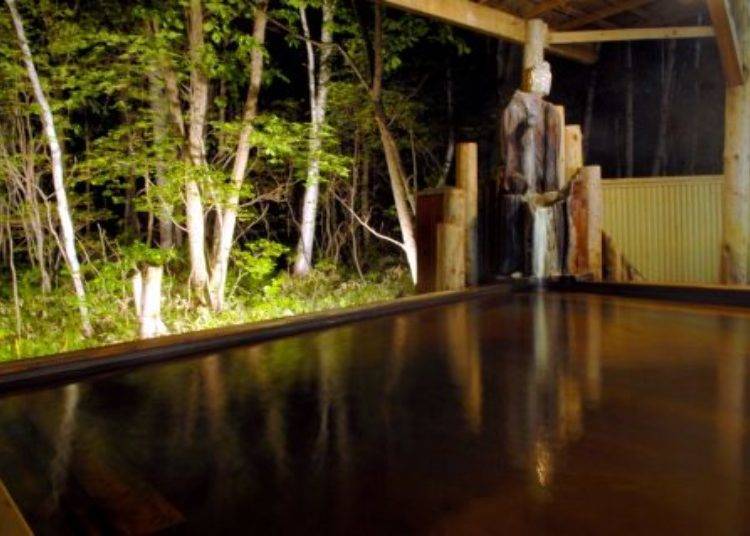
- Access:
- About an hour and half by car from JR Kushiro Station
- Feature:
- Few hotels and the hot spring district is spread out; however, due to 100% of the spring water being direct from the source, many people come for hot spring treatment. It is the main sightseeing base for visiting Mount Io, Lake Mashu, and Lake Kussharo.
- Scale of the Hot Spring Area:
- There are 8 hotels in the Kawayu district and 1 near JR Kawayu Onsen Station
- Hot Spring Quality:
- Strong acidic hydrogen sulfide inclusive, vitriol spring
- Helps With:
- Chronic dermatitis, neuralgia, and others
-
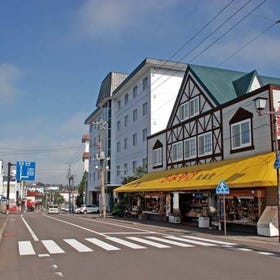
-
Address
Kawayuonsen, Teshikaga-cho, Kawakami-gun, Hokkaido, 088-3465
View Map -
Nearest Station
Kawayu-Onsen Station (Senmo Main Line)
10 minutes by bus
- Phone Number 015-482-2200
-
Address
Kawayuonsen, Teshikaga-cho, Kawakami-gun, Hokkaido, 088-3465
9. Shikotsuko Onsen: Hot spring immersed in nature, near New Chitose Airport
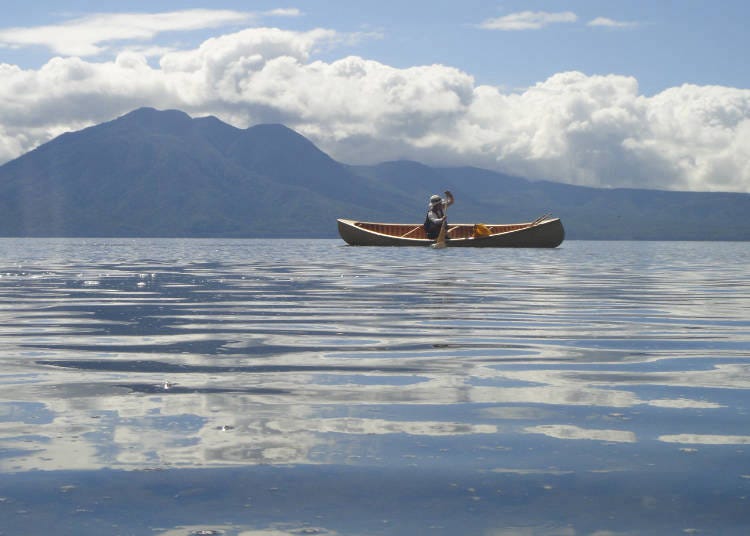
Founded in 1974, Shikotsuko Onsen graces the spa town located on the eastern shores of Lake Shikotsu. This vibrant town teems with activity, marked by the continuous movement of boats, a variety of dining options, and shops offering souvenirs.
Lake Shikotsu is renowned for its crystal-clear waters, clinching the title for Japan's best water quality for an impressive eleven consecutive years. Given this, it's only natural that pursuits like canoeing and diving are especially popular here. The Lake Shikotsu Ice Festival also stands out as a major attraction during the chilly winter season.
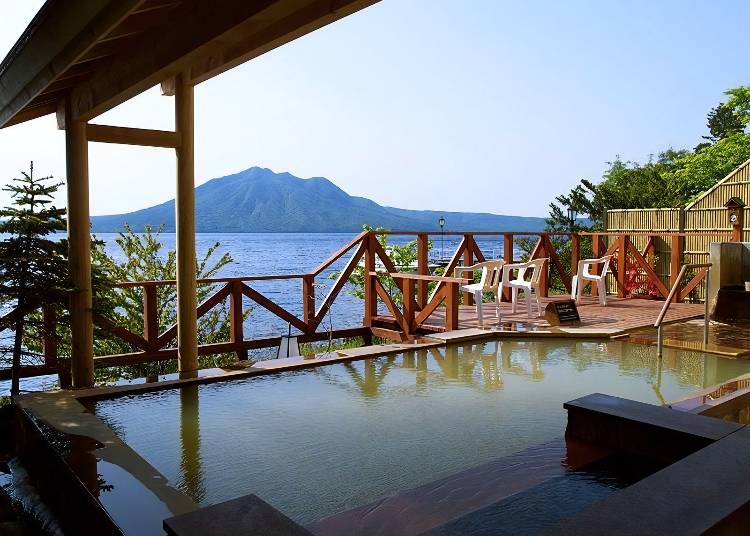
- Scale of the Hot Spring Area:
- There are six inns around Lake Shikotsu.
- Hot Spring Quality:
- Hypotonic low alkaline hot spring, neutral hypotonic high-temperature hot spring.
- Helps With:
- Chronic dermatitis, neuralgia, and others
-
Shikotsuko Onsen支笏湖温泉
- Address Shikotsuko-Onsen, Chitose Shi, Hokkaido, 066-0281, Japan
- Phone Number 0123-25-2201
10. Utoro Onsen: Hot-spring paradise where you can enjoy the nature of Shiretoko
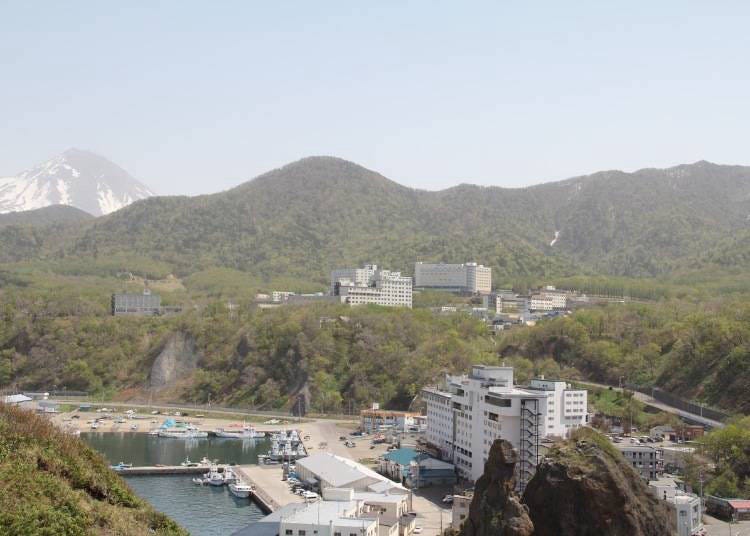
Nestled amidst stunning natural landscapes, the globally celebrated Shiretoko Peninsula is positioned on the Kuril Volcanic Belt, making it a prime location for thermal springs. Utoro Onsen, situated in the Utoro District, boasts a range of inns dotting the coast and higher terrains. Numerous visitors opt to lodge here, finding it a strategic base for their tour around Shiretoko.
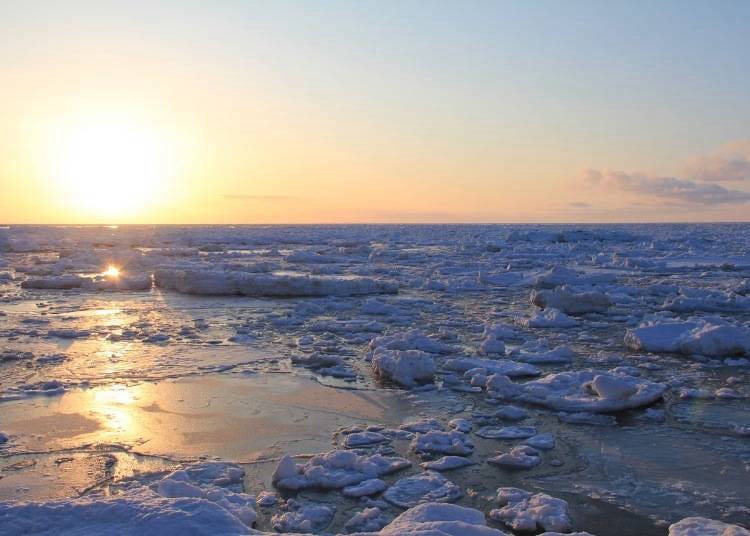
- Scale of the Hot Spring Area:
- There are 16 inns, hotels, and guest houses.
- Features:
- Since it faces the sea of Okhotsk, there are many scenic spots to enjoy the sunset, and hot springs from where you can see the drifting ice floating to the horizon.
- Hot spring quality:
- Chloride/hydrogen carbonate spring
- Helps With:
- Neuralgia, fatigue, chronic skin diseases and more.
-
Utoro Onsenウトロ温泉
- Address Utorokagawa, Shari Gun Shari Cho, Hokkaido, 099-4351, Japan
- Phone Number 0152-22-2125
Text by: Minna no Kotobasha
* This article was originally published in January 2021 and content checked in September 2023. Please see official websites for the latest information.
- Area
- Category
*Prices and options mentioned are subject to change.
*Unless stated otherwise, all prices include tax.
Limited time offer: 10% discount coupons available now!
Recommended places for you
-
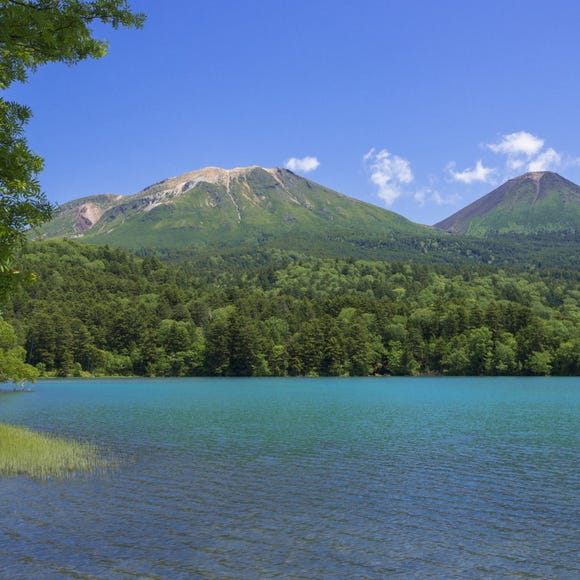
LakeAkan
Rivers, Lakes & Canyons
Abashiri
-
Appealing
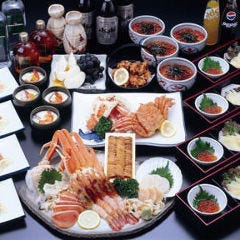
Rukku and Uohei
Izakaya
Sapporo / Chitose
-
Appealing
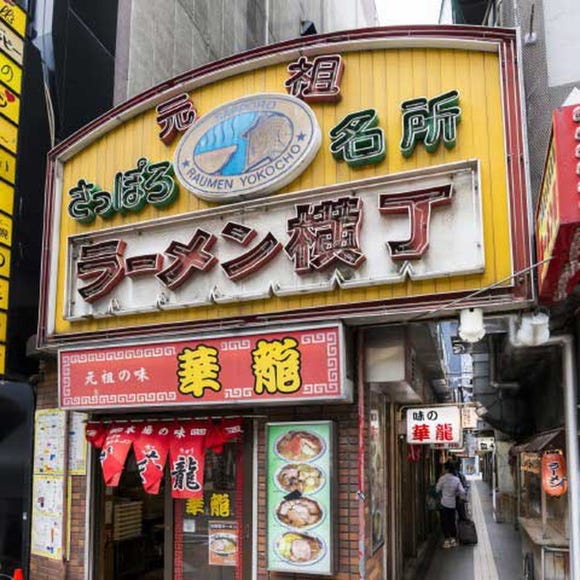
Sapporo Ramen Yokocho
Ramen
Sapporo / Chitose
-
Appealing
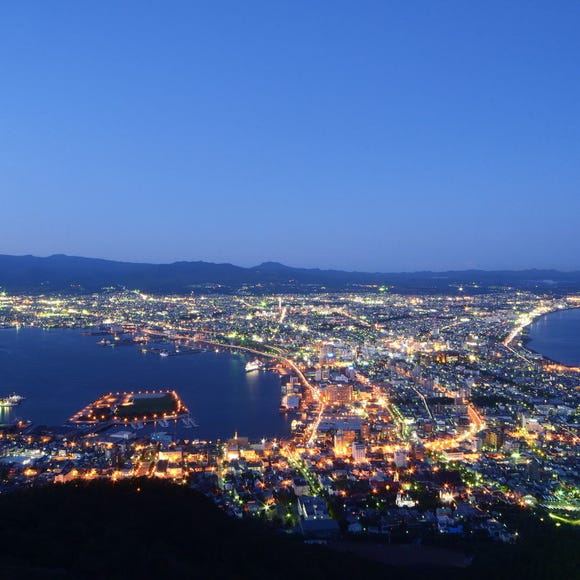
Mt. Hakodate Observatory
Forests & Mountains
Hakodate
-
Appealing
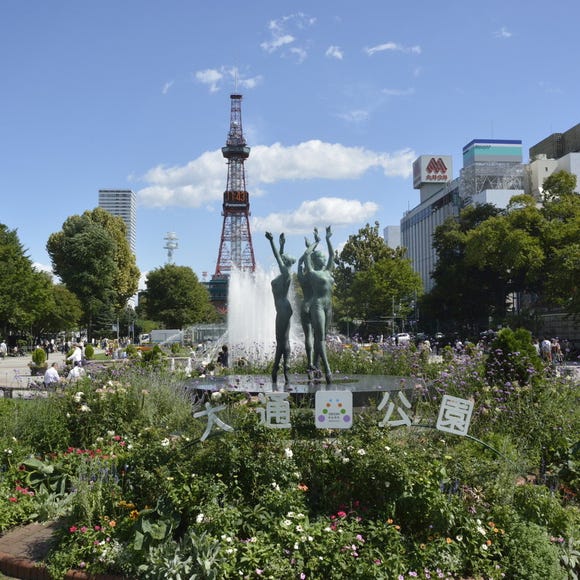
Odori Park
Parks
Sapporo / Chitose
-
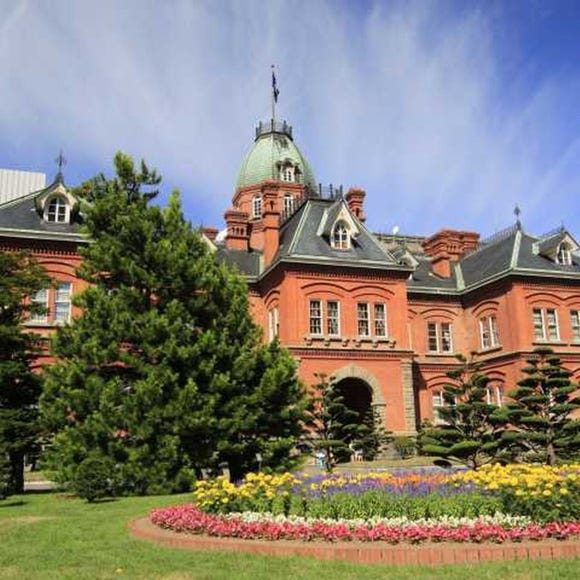
Former Hokkaido Government Office Building (Red Brick Office)
Other Historic Sites
Sapporo / Chitose
-
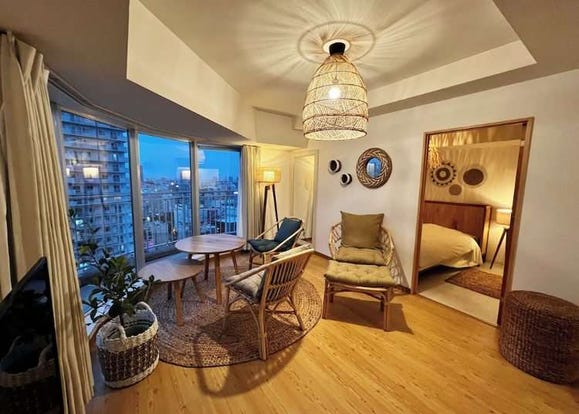
Family-Friendly Accommodations: 5 Recommended Apartment Hotels in Sapporo (Hokkaido)
-

Expert-Recommended! 5 Otaru Hotels with Great Breakfasts
-
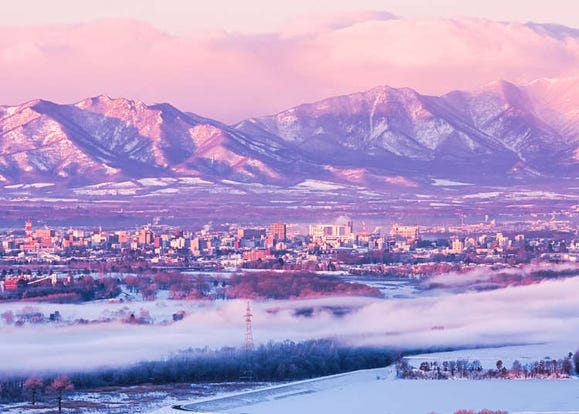
Your Trip to Obihiro (Hokkaido): The Complete Guide - Activities, Hotels, Savers & More
-
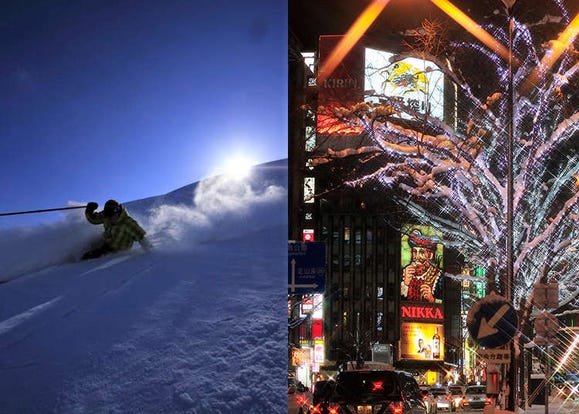
1-Day Winter Adventure in Sapporo (Hokkaido): Enjoy Snow by Day, Food by Night!
-
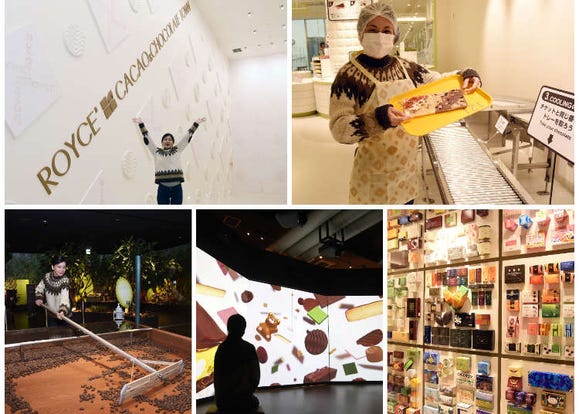
Hokkaido's ROYCE' Cacao & Chocolate Town: Fun Factory Tour & Chocolate Making Experience
-
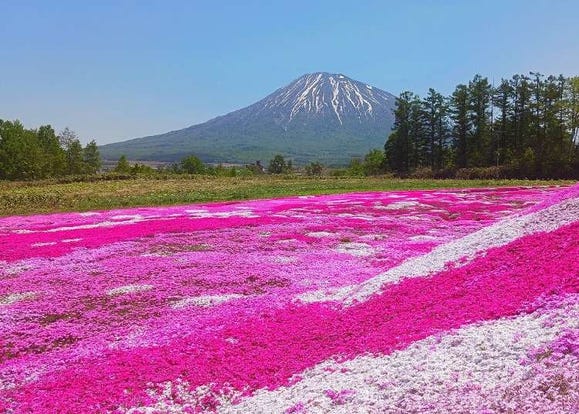
4 Must-Visit Spots for Beautiful Pink Moss Phlox Carpets in Hokkaido: Monthlong 'Floor Sakura' Viewing
-
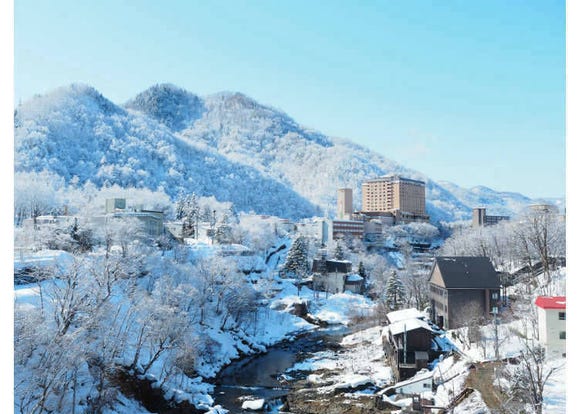
Hokkaido’s Hot Spring Paradise: A Definitive List of the Best Hokkaido Onsen!
-
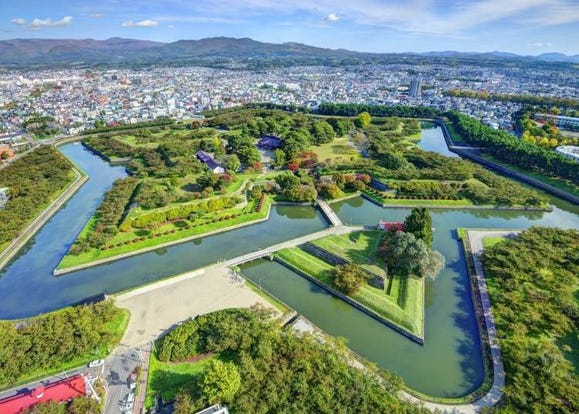
Hakodate 2-Day Itinerary for Exploring Japan's Foodie North!
-

Best Onsen in Japan: Popular Hot Springs Destinations Japanese People Can't Get Enough Of
-

6 Surprisingly Cheap Things in Japan
-
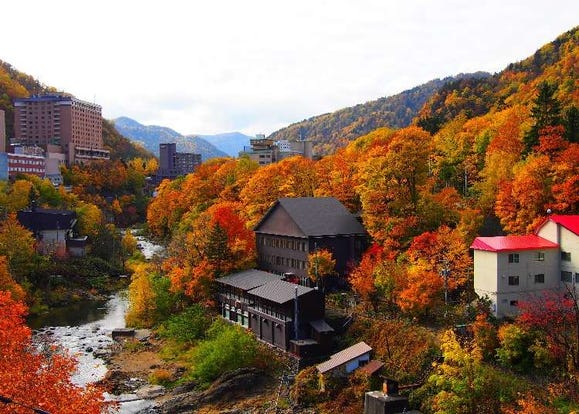
Jozankei Onsen Guide: Selected Ryokan & Fun Things to Do in Sapporo's Hot Springs Paradise
-

What to Pack for Japan: 8 Essential Things for a Hassle-Free Trip
- #best sushi hokkaido
- #things to do hokkaido
- #best ramen sapporo
- #what to bring to japan
- #new years in tokyo
- #what to buy in ameyoko
- #japanese nail trends
- #what to do in odaiba
- #onsen tattoo friendly tokyo
- #daiso
- #best sweets otaru
- #japanese fashion culture
- #best nature furano
- #japanese convenience store snacks
- #best japanese soft drinks













